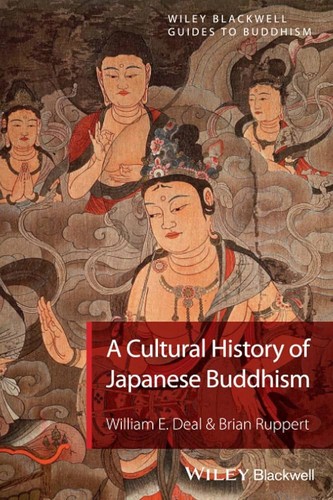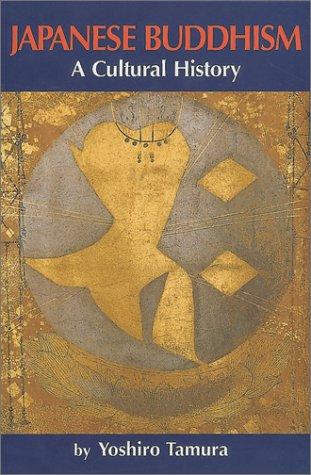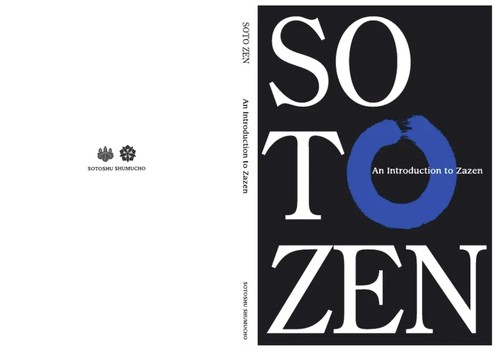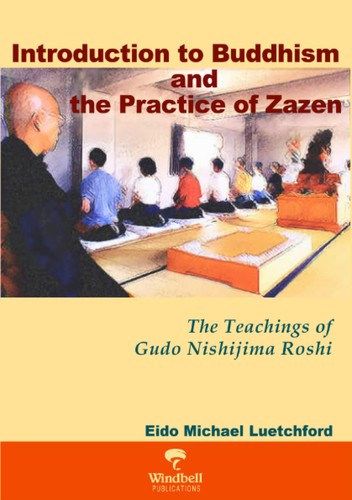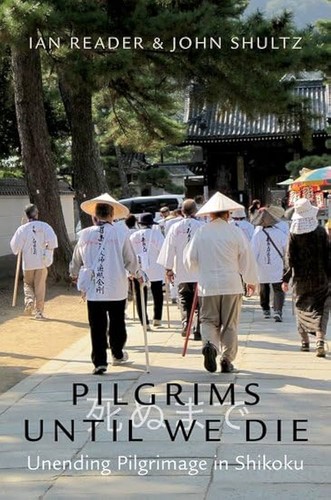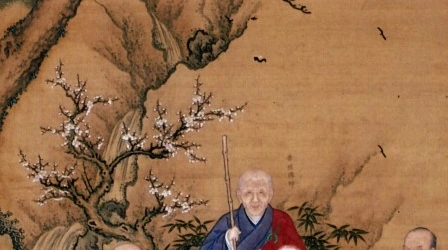Japanese Buddhism
Subscribe to this topic via: RSS
From the austere “Zen” meditation traditions to the devotional “Pure Land” sects, Japanese Mahāyāna’s distinctive forms largely emerged in the tumultuous Kamakura period (1185-1333) and were consolidated and formalized during the feudal Edo (1603–1868). During the Meiji Revolution (1868–1912), Buddhism was persecuted and celibacy abolished: a devastating blow to the various Buddhist schools softened somewhat by their conviction that “original enlightenment” (本覺 hongaku) remains available to all, even in this “degenerate age” (末法 mappō).
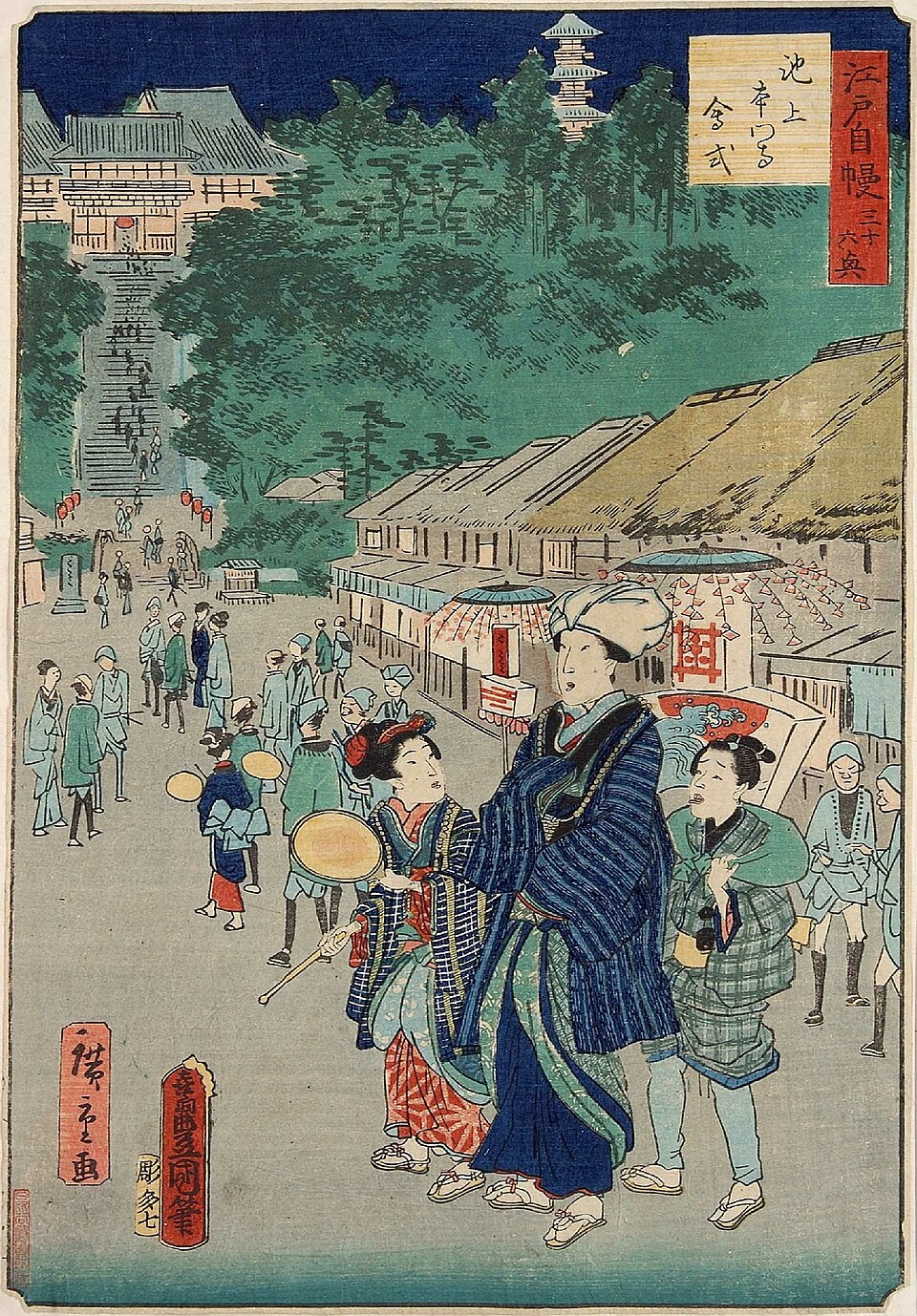
This 19th century postcard depicts pilgrims approaching Ikegami Honmon-ji temple for its annual festival commemorating the life and passing of Kamakura-era reformer Nichiren Daishōnin (日蓮大聖人).
Table of Contents
Books (9)
Featured:
-
256 pages
-
204 pages
-
The old court eventually fell to a new military government which brought about the Kamakura period (1192–1333). The increasing discord and chaos of the times led to disillusionment and a call for the revival of faith. It was during these troubled time that Hōnen (1133–1212), Shinran (1173–1262), Eisai (1141–1215), Dōgen (1200–1253), Nichiren (1222–1282), and other Buddhist leaders appeared and expounded their teachings of salvation for all.
-
236 pages[recommended but under copyright]
See also:
Readings (47)
Featured:
-
⭐ Recommended
There is little in Kapleau’s book to suggest that his teachers were anything but respected members of orthodox Zen monastic orders. Yet such was not the case, for in 1954 Yasutani Hakuun 安谷白雲 (1885-1973), the Zen priest whose teachings are featured in The Three Pillars of Zen, severed his formal ties to the Soto school in order to establish an independent Zen organization called the Sanbokyodan 三宝教団, or “Three Treasures Association.”
-
⭐ Recommended
Insisting that cremation was sanitary and that it also saved grave space while facilitating- ancestor worship, cremation supporters appropriated state-sanctioned values and aims to win repeal of the ban only two years after it went into effect. Ironically, the end result of the ban was a widely accepted rationale for cremation, which was transformed from a minority practice into a majority one. By the end of the twentieth century, cremation had become the fate of nearly every Japanese.
-
… unlike other Buddhist traditions based on teachings contained in one or more Buddhist sūtras, the Zen school validates itself on the basis of being “a transmission outside the sutras” (kyōge betsuden). That is to say, a transmission of the Buddha-dharma from the enlightened mind of a Zen master to his/her disciple(s). But what happens in those cases when the “enlightened master” isn’t truly enlightened?
-
Someone who experiences a kaicho as a child will have attained full status as an adult by the time of the next kaicho, and will have become an elder member of the community by the time of the one after that. […] The emotional significance of this time frame is not immediately obvious, but becomes clear through conversations with residents of Yokkamachi…
-
By using original documents this article shows the evolution of the Zen denominations within the larger context of the legal framework that shaped all Buddhist denominations, and depicts how the divisions between sects and branches were reshuffled several times before stabilizing in their present form.
-
This [Meiji Era] movement resulted in the destruction of tens of thousands of Buddhist temples throughout the country together with their statuary, the forced laicization of large numbers of Buddhist priests and widespread attacks on Buddhist doctrine and praxis, among other repressive measures. In short, Buddhism was attacked as a superstitious, foreign religion that had no place in a Japan modernizing at breakneck speed.
-
Without a coercive village structure to enforce giving, the low-tension temples found themselves without their effective retainer. With the first-best contract unavailable, many temples have turned to fee-for-service arrangements of which the abortion-related ritual is merely the most notorious. Ironically, the new environment presents an entirely different challenge: temples now find themselves competing with internet-based priest-dispatch services.
-
On the one hand, it stands squarely upon a Mahayana Buddhist conception of enlightened wisdom as radically nondichotomous and nondual with reality. On the other hand, it directly confronts the nature of human existence in its ineluctable finitude: karmically conditioned, discriminative and reifying in awareness, and given to the afflicting passions…
-
Only in one area was Tokugawa Buddhism innovative and successful: the development of a complete liturgical system for funeral services and remembrance of ancestors. For better or for worse, this feature henceforth became central in popular Buddhist piety.
-
The free, bilateral movement between “not one” and “not two” characterizes Zen’s achievement of a personhood with a third perspective that cannot be confined to either dualism or non-dualism
-
When explaining their reasons for using such peculiar statues at their temples, the abbots state that these images brighten the atmosphere…
-
contemporary Buddhist women actively work through ritual to create meaningful relationships with one another.
-
The essay asks what an enlightened moral sensitivity might require, and concludes in challenging the Zen tradition to consider reengaging the Mahayana Buddhist practices of reflection out of which Zen originated in order to assess the possible role of morality in its thought and practice
-
To this day it is not unusual in Japan for the scholar to be a fine calligrapher and an accomplished poet in addition to possessing the pertinent intellectual abilities.
-
This article examines the “temple wife problem:” that the wives of Sōtō Zen Priests are expected to manage their husband’s temples but receive no official status or support for their labor.
-
Victoria is probably right in asserting that Makiguchi was not exactly the anti-war zealot described by the Soka Gakkai today, but Victoria misreads and misinterprets Makiguchi’s writing in his mistaken portrait of him as a pro-militarist figure.
-
Through a study of three monks, Tōjū Reisō, Tairyū Bun’i, and Seishū Shusetsu, strategies employed to preserve Rinzai Zen spiritual legacy in the face of the turmoil of Meiji are highlighted. These monks did their best to continue their eremetic existence and to pick up the pieces left by the widespread destruction of Buddhist temples and monasteries in early Meiji Japan.
-
For most of the history of Buddhism, “devotional” practices like prayer, invocation, and offerings have not been at odds or even very distinctly separated from “contempla- tive” practices such as meditation, sutra copying, and sutra recitation.
-
Bashō was a sensitive poet whose values were firmly founded in Buddhist, Confucian, and Daoist thought. Bashō, although having seriously studied Zen, was never a monk belonging to a monastery, but he often dressed as a priest and often stayed at temples and shrines.
-
Because official monks were bureaucrats, they did not need to form orders that included secular believers. In contrast, reclusive monks needed to establish orders that included secular believers because they were not supported by the government. Because they were no longer official monks, they were freed from certain restrictions. They could pray for the salvation of women and lepers, conduct funerals, and collect contributions, all of which had previously been regarded as involving impurity.
-
Hirakawa and Matsunami think that a moribund Buddhism can be revived by understanding traditional doctrines. Akizuki’s new Māhāyana turns out to be nothing but the old Zen. Endō is a harsh critic with no particular plan for reform. Fujii and Sasaki recognize that Buddhism must undergo rebirth, but suggest that current forms will suffice.
-
We are too spiritually weak and degenerate at this present time to carry out the earlier disciplines.
-
Our passions, while remaining just as they are, become one with great wisdom, so that they are gradually transformed like ice melting into water through the working of the wisdom.
-
Everything has the potential to support and realize spiritual life.
-
Since in the teachings of Shin Buddhism Obon itself is nothing special but provides one of the opportunities for listening to the Buddha Dharma, there is no reason to do something special for it. In traditions other than Shin Buddhism, however, Obon is a special, fancier and more serious event for people to welcome their ancestors back home.
See also:
Audio/Video (9)
Featured:
-
⭐ Recommended
The 500-year history of world maps in Buddhist Japan and what these maps tell us about the Japanese, Buddhist identity.
1h 19 m -
It’s not entirely clear when Japanese women began to fear attacks by the spirits of their vengeful aborted fetuses, but it is clear that beginning in the late 1970s, women began requesting and paying for a new religious rite called mizuko kuyō (water child memorial) that Buddhist and Shinto priests had never heard of before.
-
Jōdo Shinshū temple wives (bōmori) are central to sustaining religious life in Japanese communities beyond formal rituals. Their experiences raise broader questions about gender roles and equality within Japanese Buddhism and society.
59 min -
 7 min
7 min -
 4 min
4 min -

See also:
Reference Shelf (2)
-
There are 400+ deities herein, and 4,000+ photos of statuary from Kamakura, Nara, Kyoto, and elsewhere in Japan.
-
A translation of the Prajñāpāramitā Sutra by Shunryu Suzuki Roshi, with the transliterated Japanese, as it was used for services at the San Francisco Zen Center in the 1960s.
